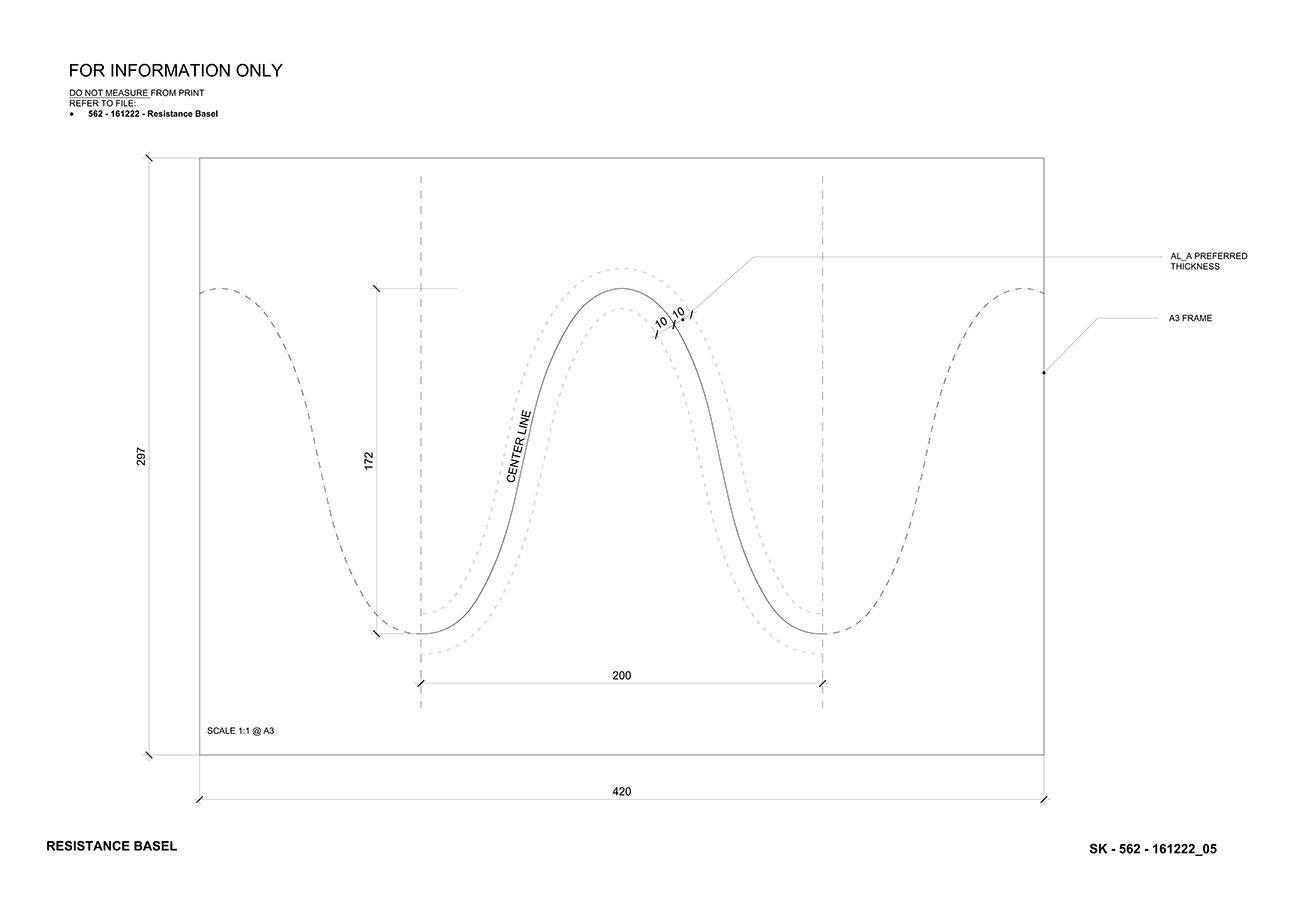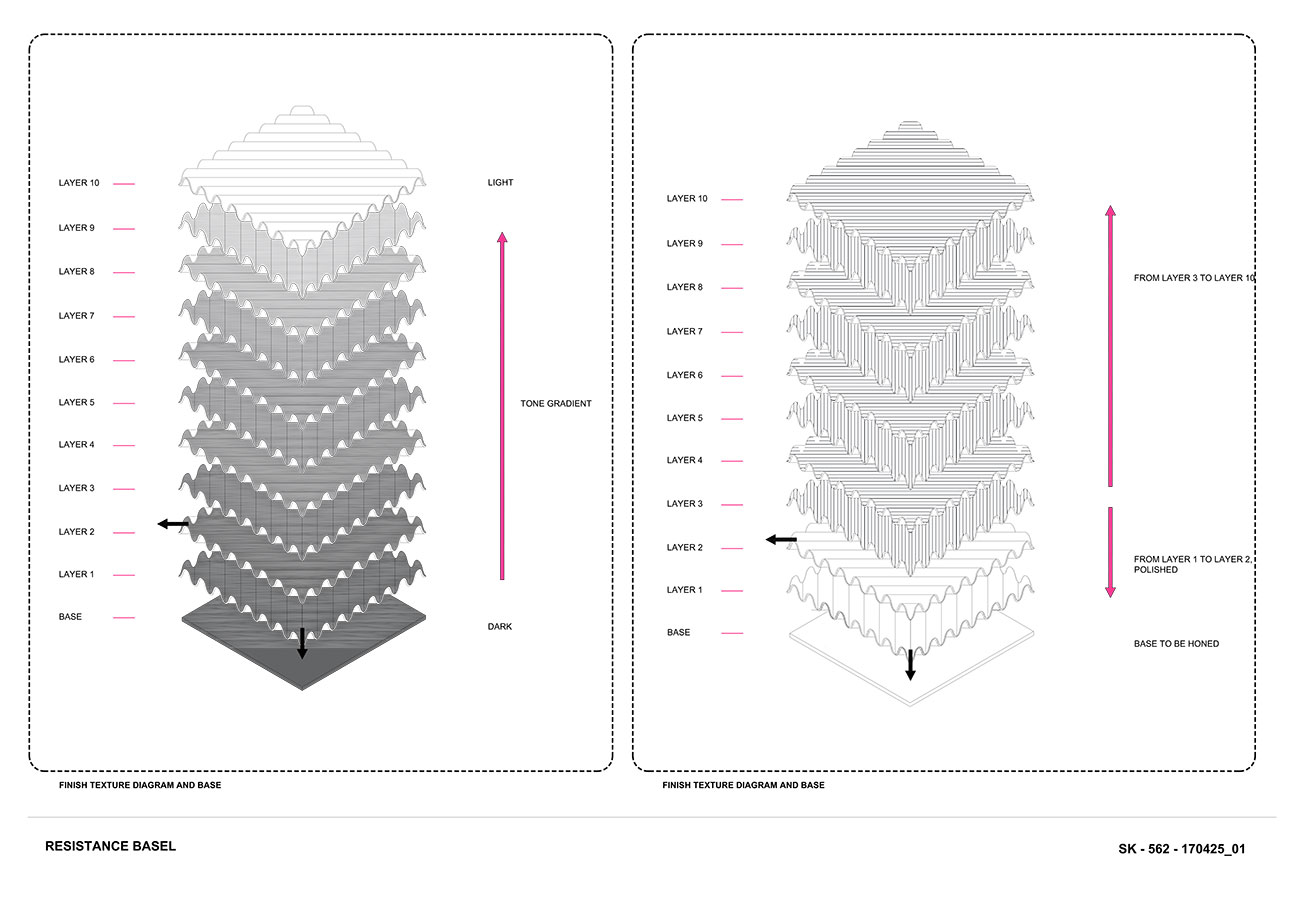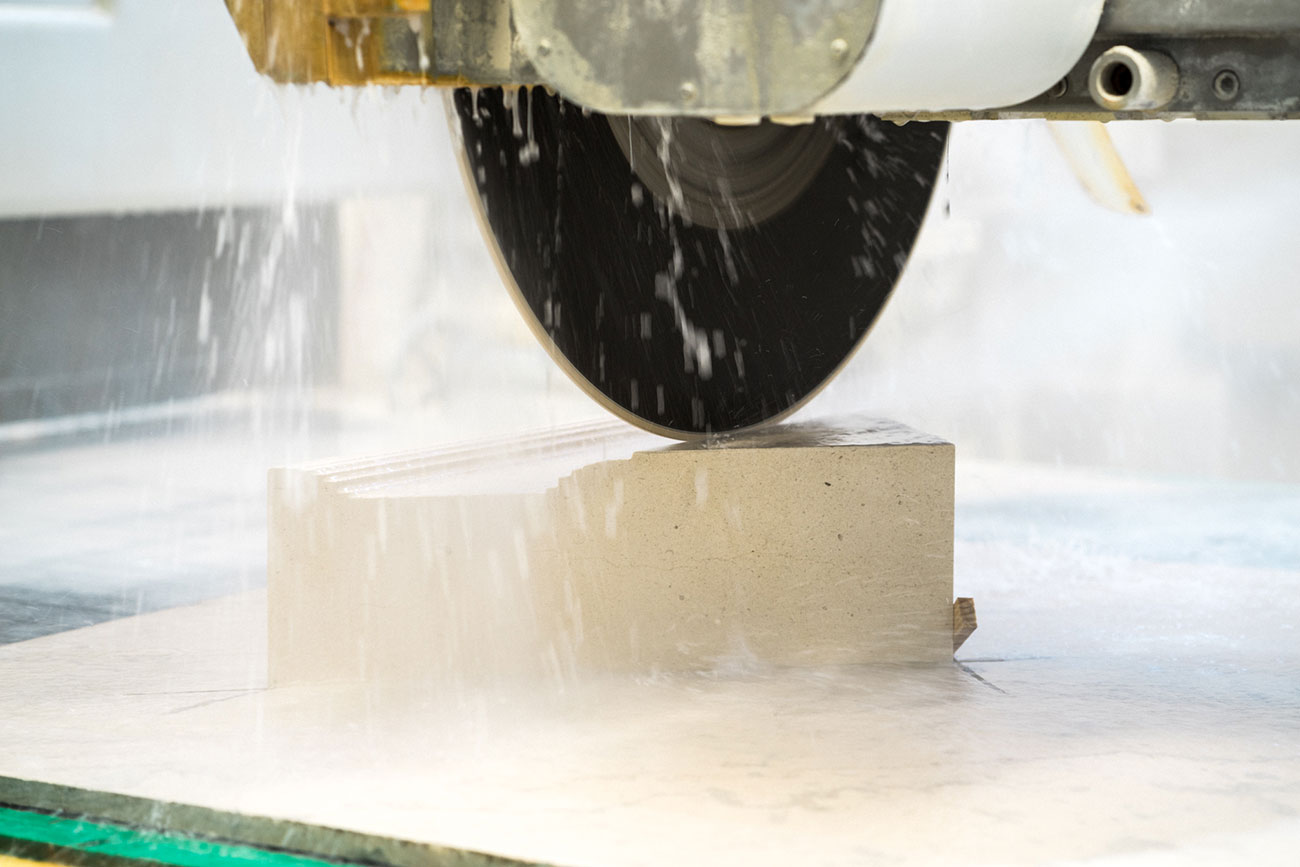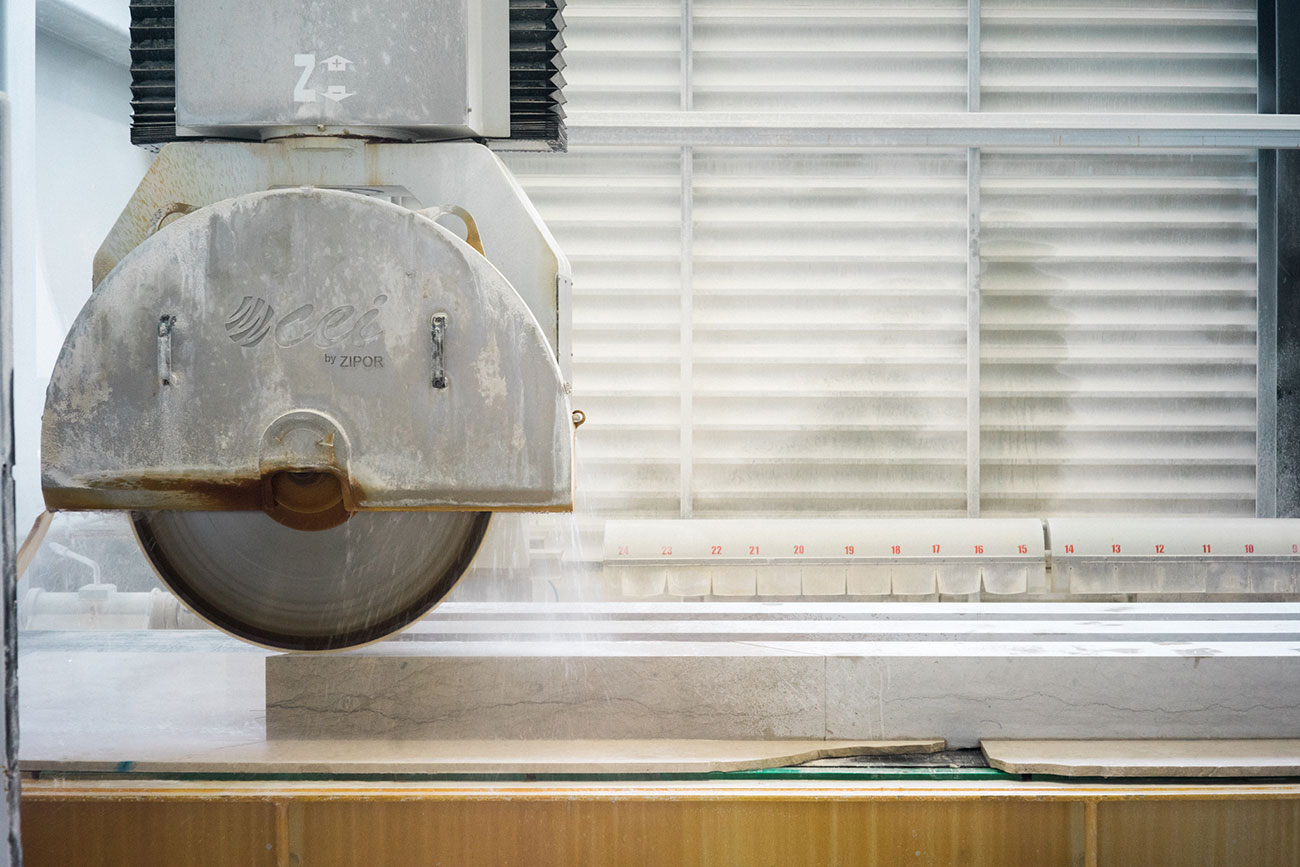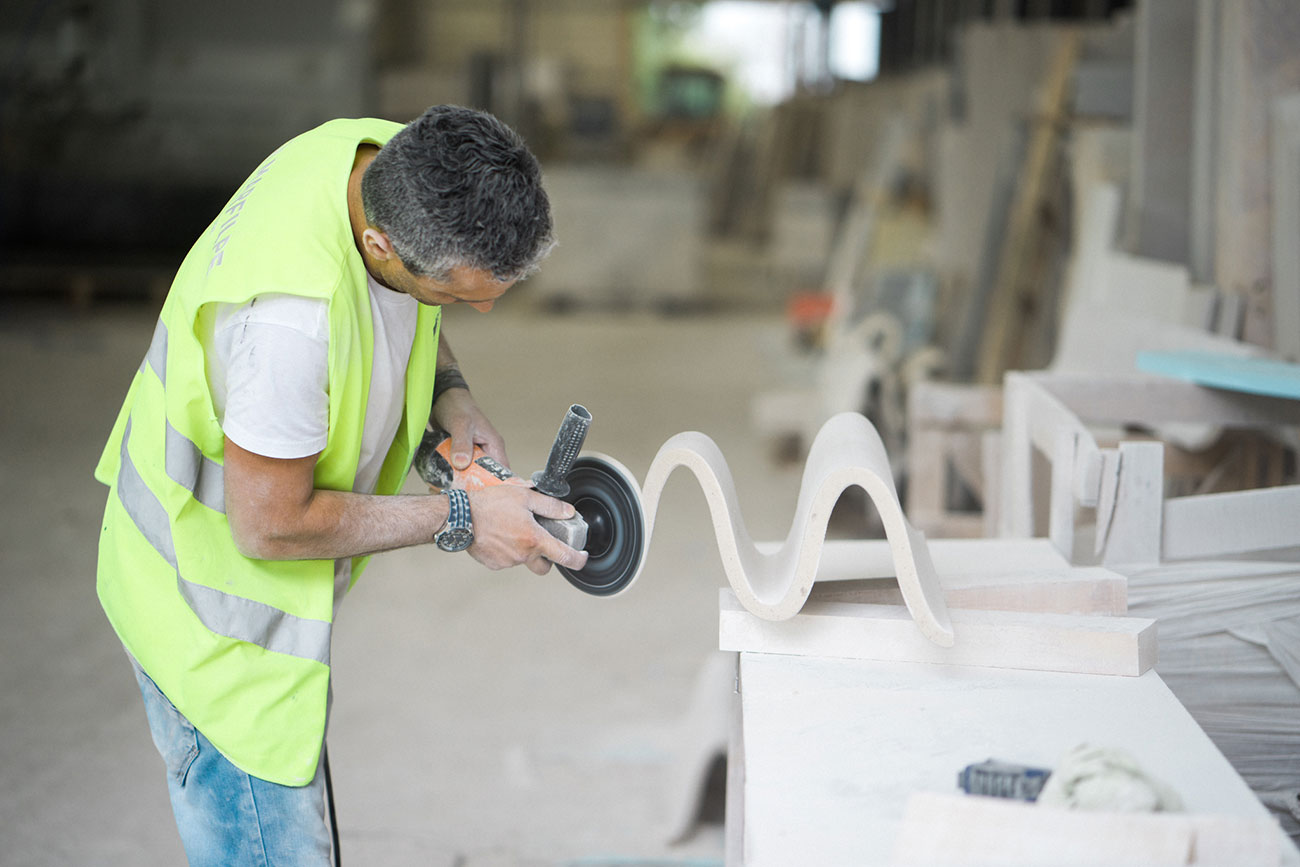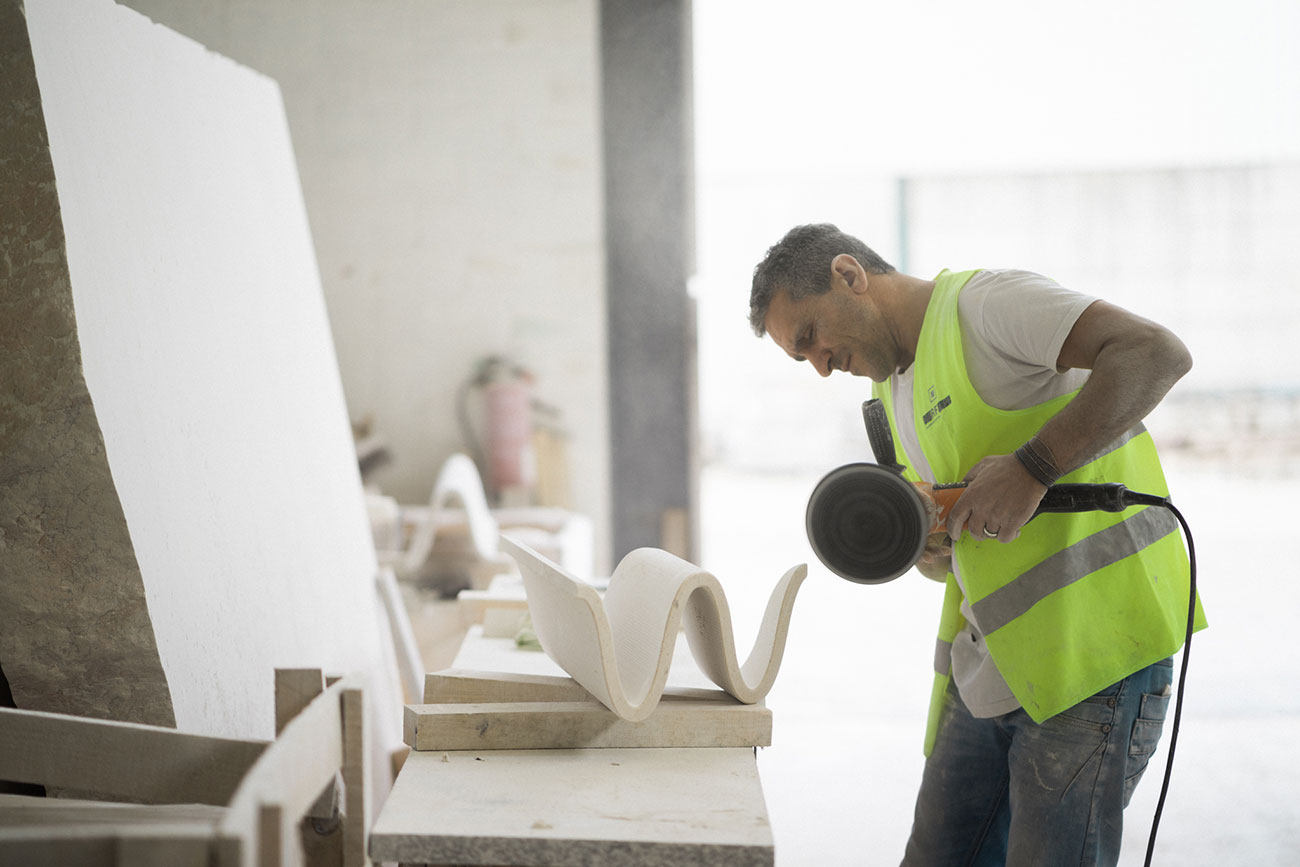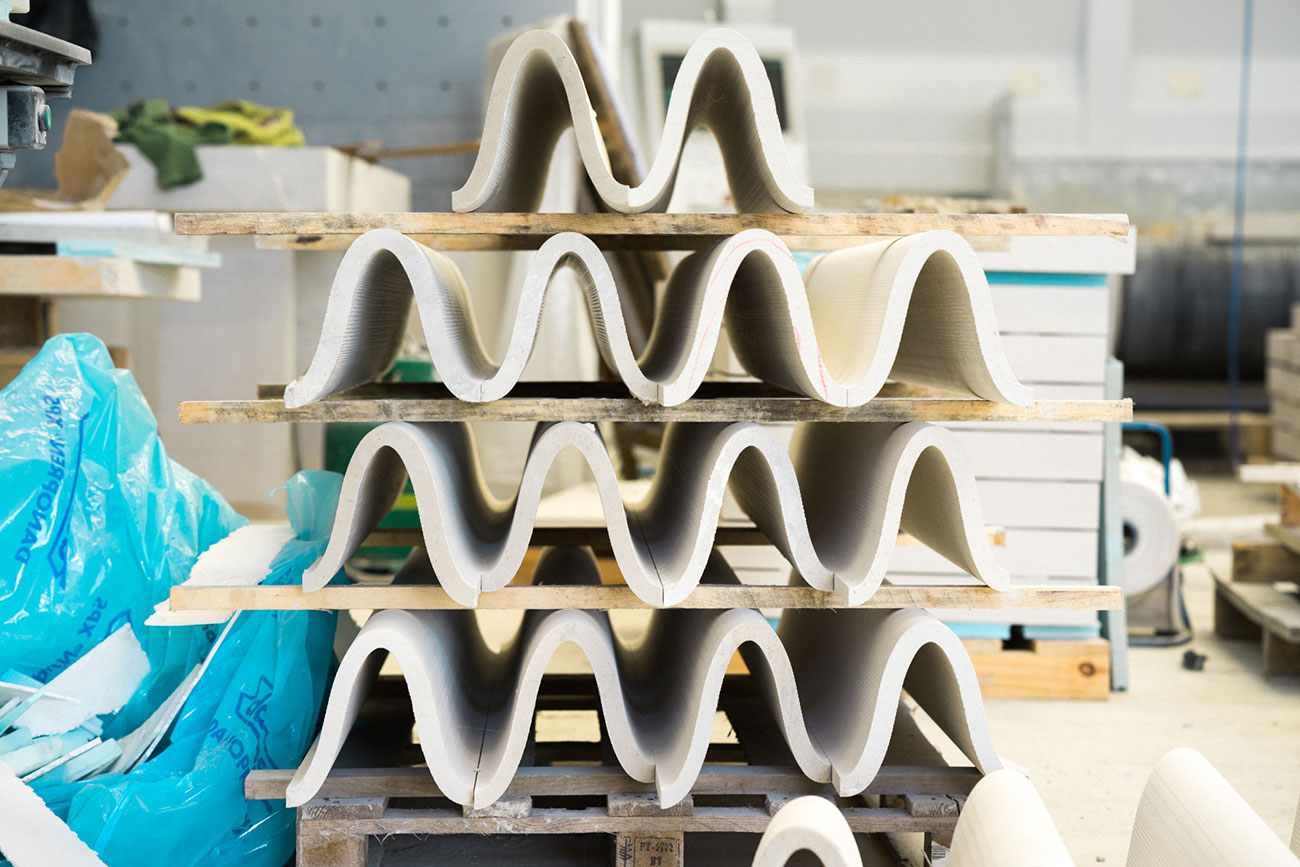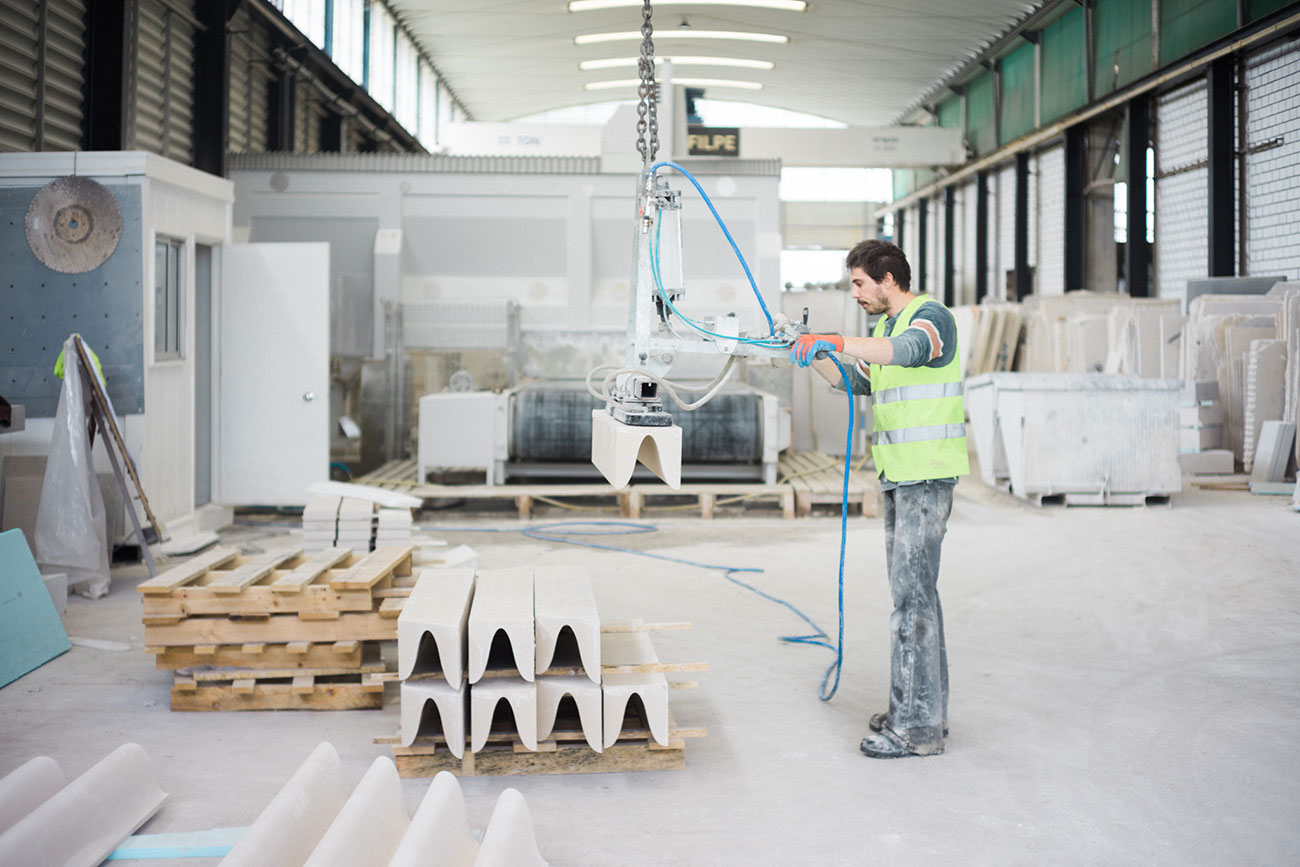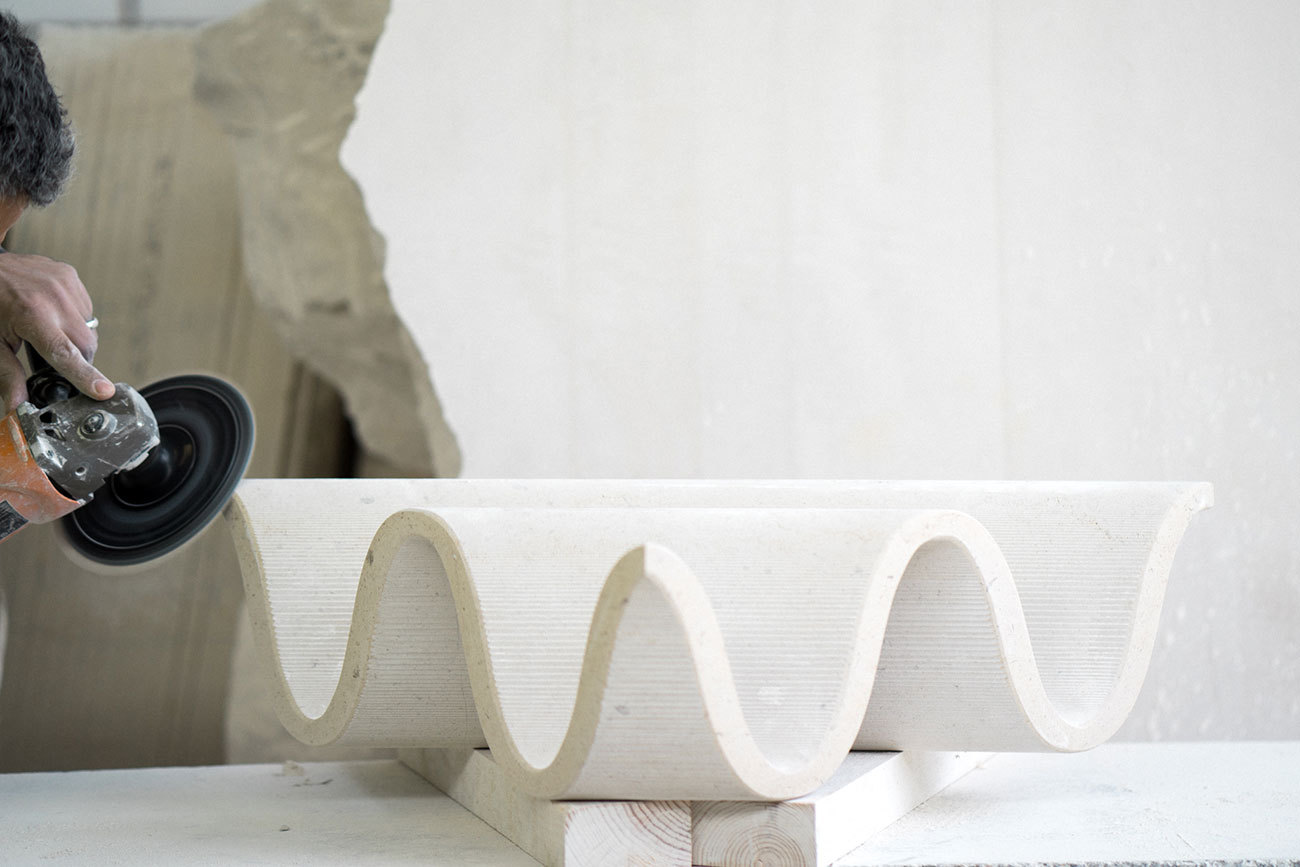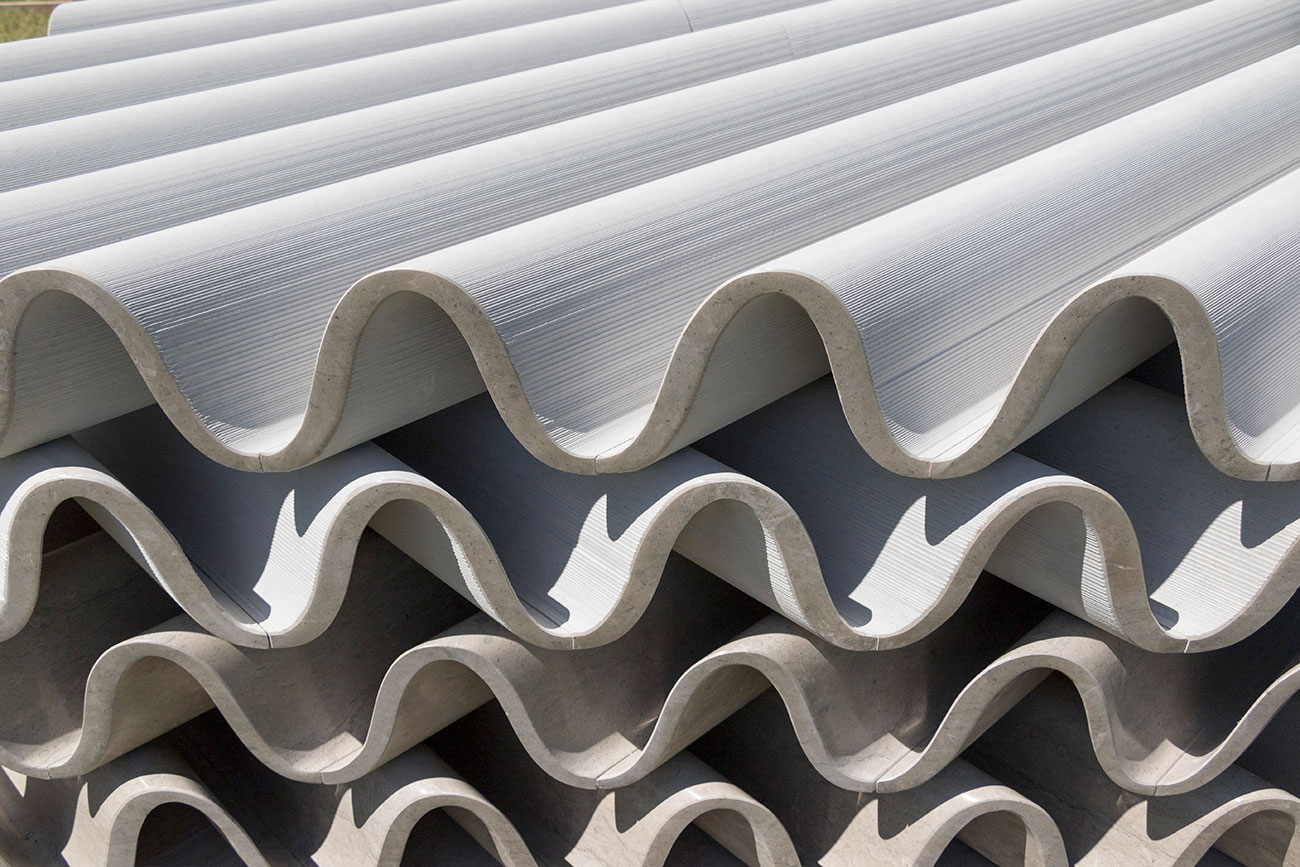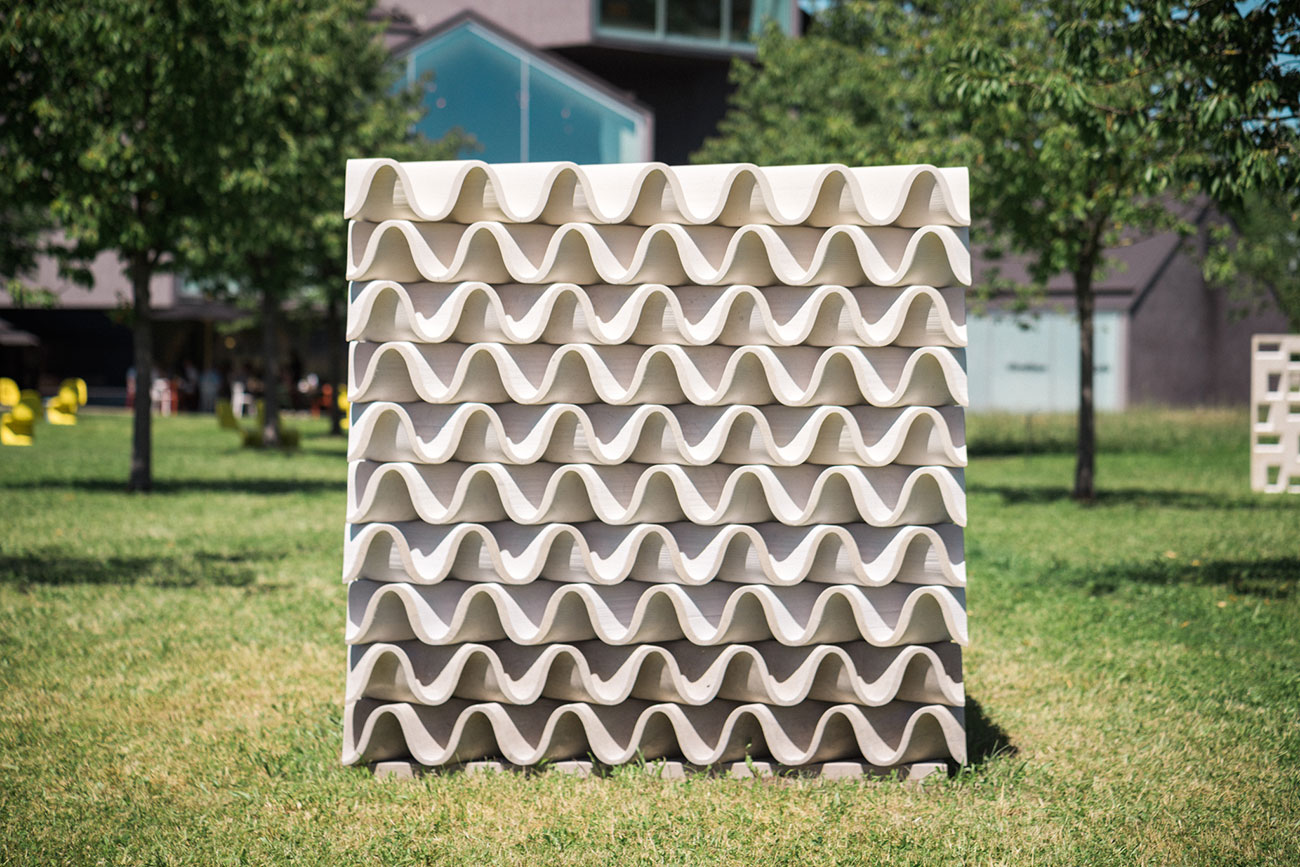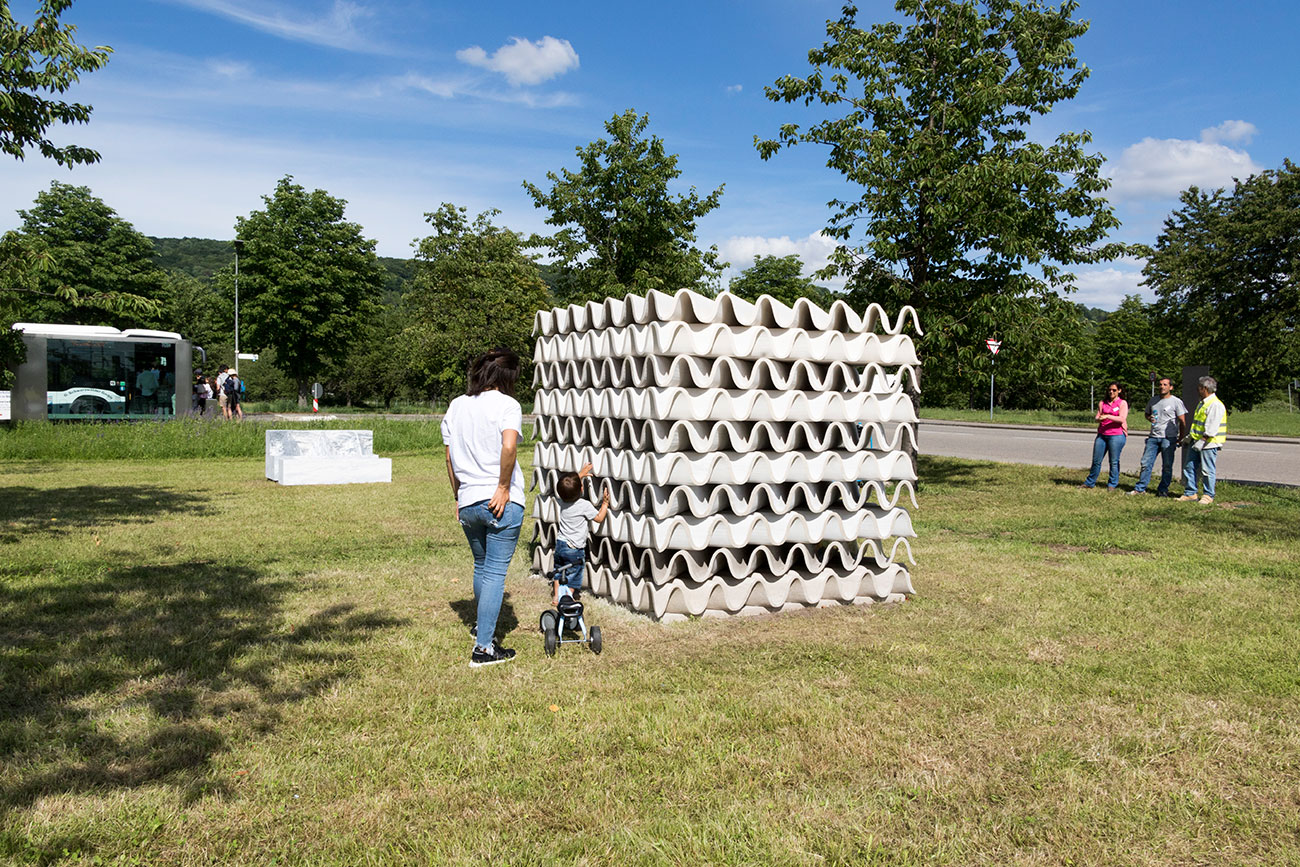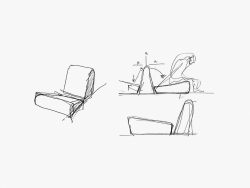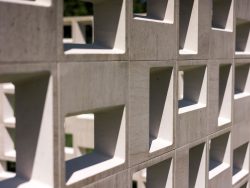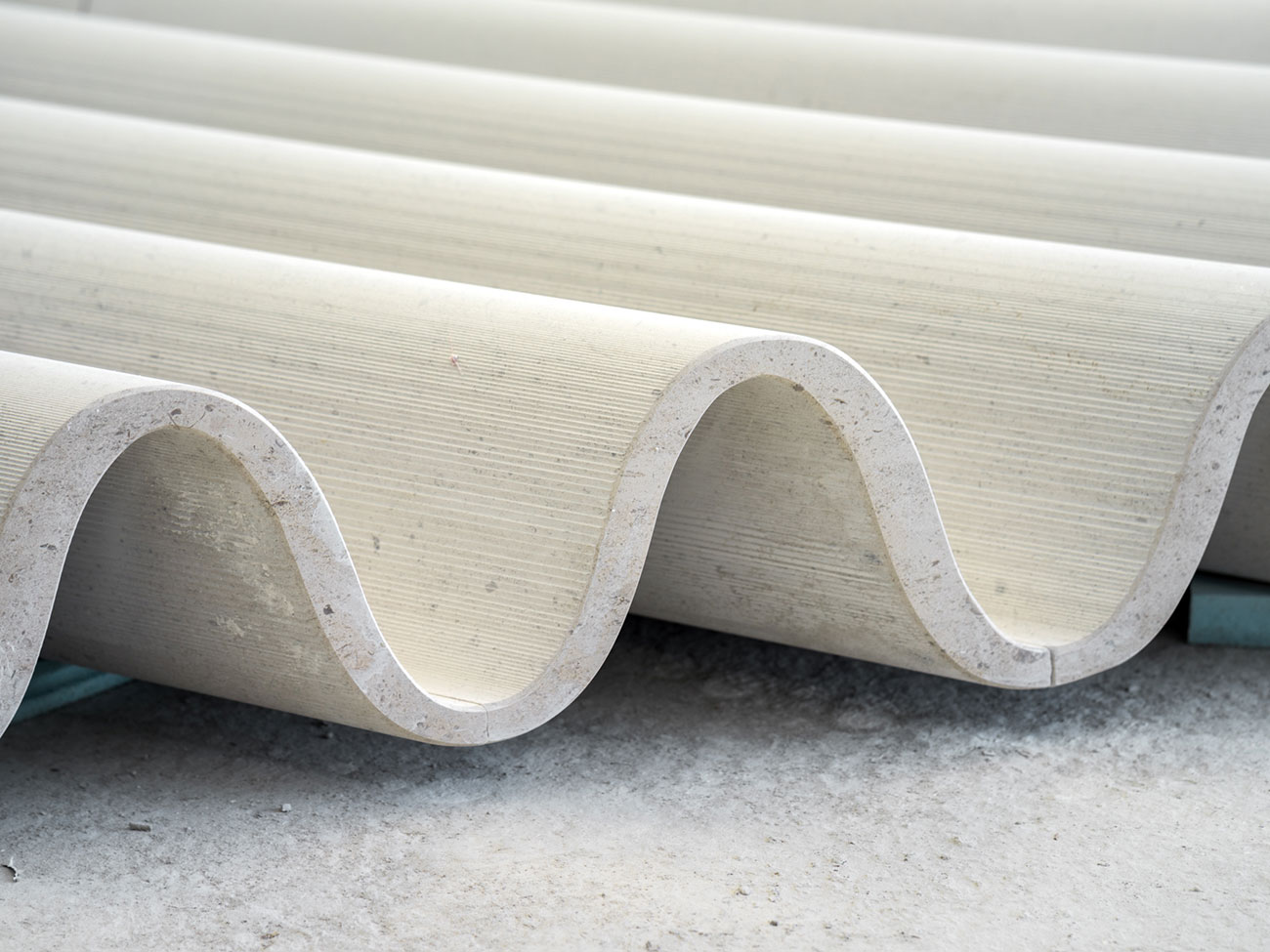
Deconstructing the Cube
Amanda Levete
A piece that plays with changing perceptions of geometry, exploring how we understand mass. A seemingly perfect cube almost 2 m high is created by a series of undulating slabs of limestone stacked one above the other, each layer rotated through 90 degrees. As you move around the cube, it reveals its visual complexity, creating a dynamic kinetic effect. From the sides, it appears to be a solid, monolithic mass; from the corners, it starts to dematerialise and the ten individual strata are exposed and views right through the cube become possible.
Deconstructing the Cube, by Amanda Levete
Our design plays with changing perceptions of geometry and becomes an exploration of how we perceive mass.
A seemingly perfect cube over 2 m high is created by a series of undulating slabs of limestone stacked one on top of the other, with each layer rotated through 90 degrees. As you move around the cube, it reveals its visual complexity, creating a dynamic kinetic effect.
From the sides, it appears a solid, monolithic mass; from the corners, it starts to dematerialise and the ten individual strata are exposed and views right through the cube become possible. You suddenly realise that it is an optical illusion and – when seen from certain angles – that it has no corners, that it is not a cube and that it is not solid.
The layers subtly shift in tone, graduating from dark at the base to light at the top, almost appearing to dissolve at the apex.
Empowering the stone as a rich and beautiful material, it expresses the method of its construction at the upper levels, where the cutting lines remain visible while the lower layers have a smooth polished finish.
It extends the potential of Portuguese limestone by employing innovative fabrication methods of cutting the stone into sinusoidal waves before joining them together to create the large 5 sqm layers.
